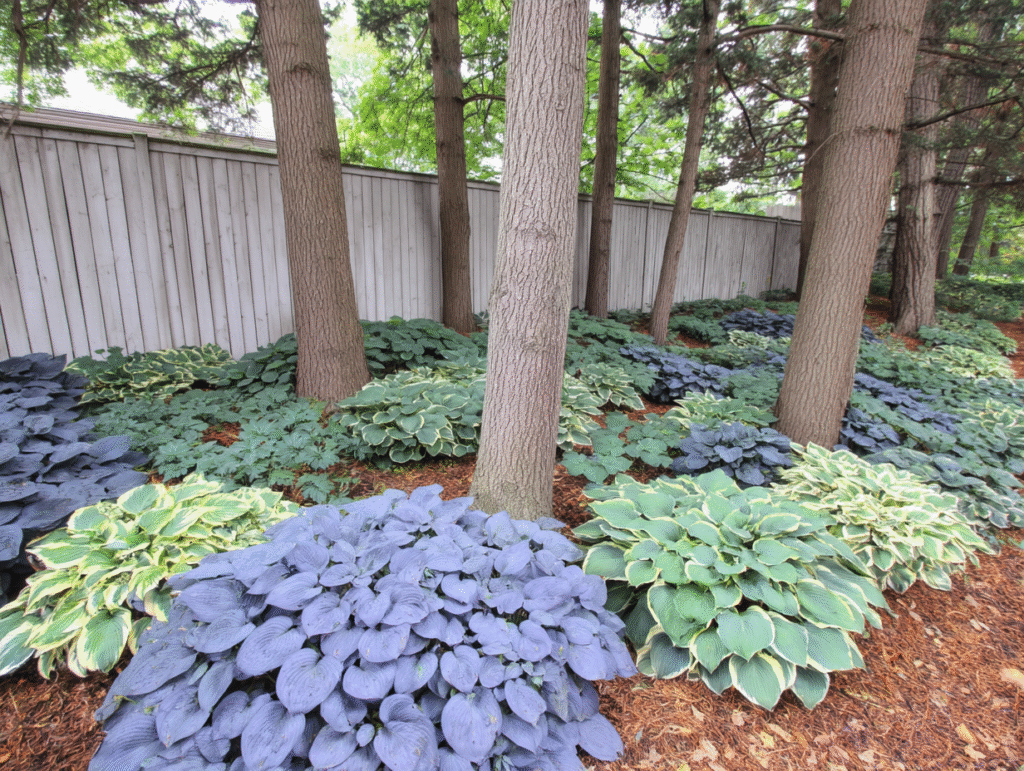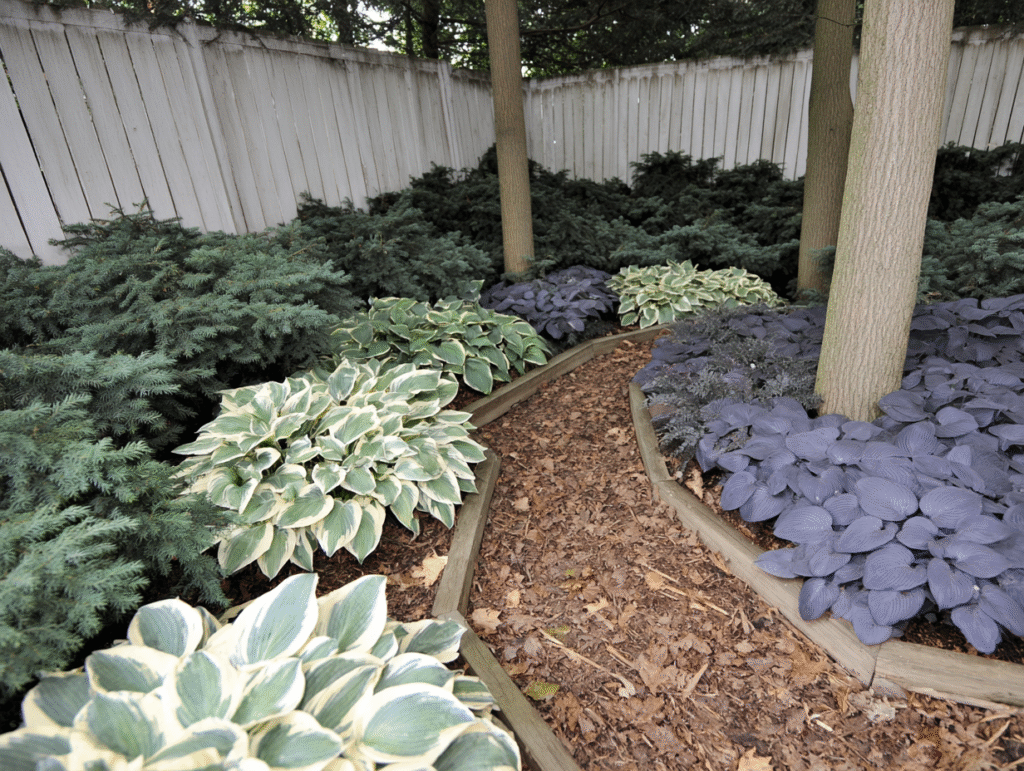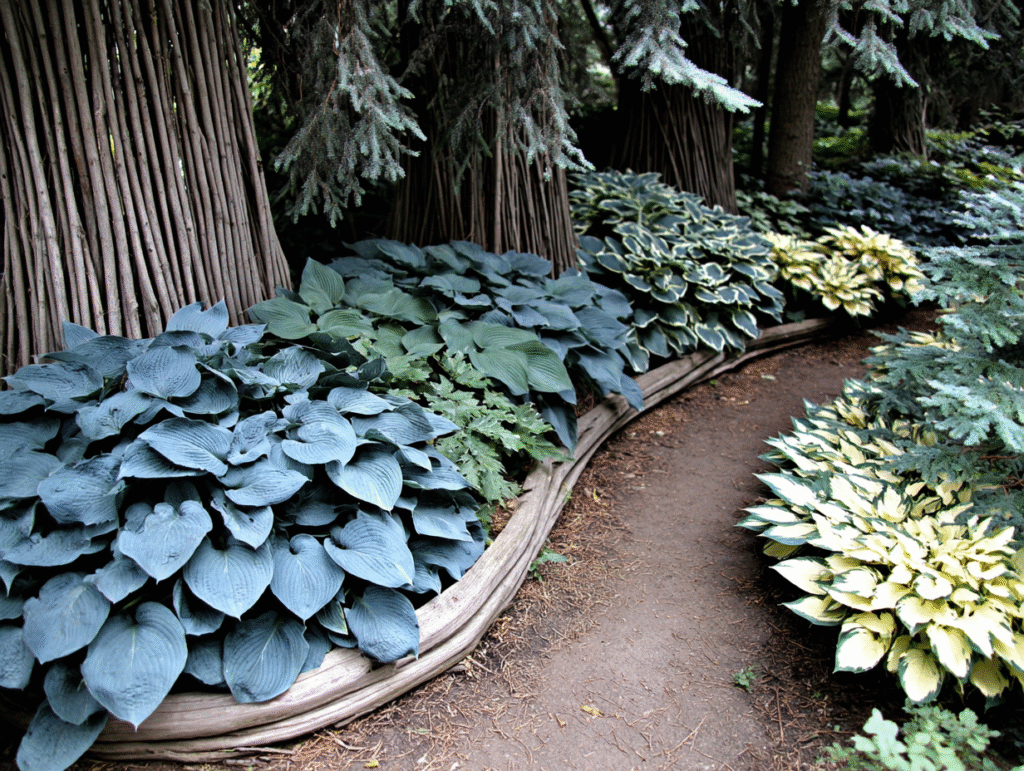You know that frustrating spot in your yard where nothing seems to grow? The one under your big oak tree, or behind the garage where the sun never quite reaches? I used to hate those areas in my garden. Every plant I tried there would either struggle along looking pathetic or just give up and die completely.
Then I discovered hostas for shade, and honestly, it changed everything about how I approach gardening. These plants don’t just tolerate shade – they actually prefer it. After growing them for over fifteen years now, I can’t imagine my garden without them.
My neighbor Sarah always jokes that I’m the “hosta lady” on our street. She’s not wrong. I’ve got probably forty different varieties now, and every single one of them is thriving in spots where other plants failed miserably.
Why I Fell in Love with Hostas (And You Will Too)
The first hosta I ever bought was a sad-looking little thing from the clearance rack at the garden center. I figured for three bucks, what did I have to lose? I stuck it in the shadiest corner of my backyard and basically forgot about it.
Two years later, that “sad little thing” had turned into this gorgeous, full plant with leaves the size of dinner plates. I was hooked.
Here’s what makes hostas so special: they evolved in Asian forests, growing under tree canopies where filtered light is the norm. When you plant hostas in shade, you’re actually giving them exactly what they want.
The variety is incredible too. I’ve got tiny ones that look like little mouse ears, and massive ones that are literally taller than my four-year-old nephew. Some have blue-green leaves that look almost metallic, others are bright chartreuse that practically glows in shade. My favorite is this variegated one called ‘Patriot’ – it has stunning white edges that make it look hand-painted.
And here’s the kicker – they come back every year, bigger and better than before. Talk about bang for your buck.

Finding the Right Hostas for Your Specific Shade Situation
Not all shade is created equal, and I learned this the hard way. Different hosta varieties need different amounts of light.
The really dark areas of your yard – like under dense evergreen trees or on the north side of your house – those need the blue-green varieties. I’ve got a ‘Halcyon’ growing under my spruce tree that gets maybe two hours of filtered light a day, and it’s absolutely gorgeous with incredible blue-gray leaves.
For spots that get a bit more light – maybe morning sun or dappled shade throughout the day – that’s where the variegated hostas shine. My ‘Gold Standard’ sits in a spot that gets about four hours of morning sun, and by midsummer develops amazing golden centers with dark green edges.
If you’ve got bright shade or some morning sun, you can go with lighter colored varieties. I have a ‘Sum and Substance’ that’s probably four feet across now, with huge chartreuse leaves that get brighter in more light. But be careful – too much direct afternoon sun will fry them
My Tried-and-True Planting Method
I’ve planted a lot of hostas over the years, and spring is my favorite time to plant, right when the soil starts to warm up. Fall works too, but I like giving them a full season to get established.
The biggest mistake I see people make is not preparing the soil properly. Hostas aren’t picky about much, but they absolutely hate sitting in soggy soil. I always dig planting holes about twice as wide as the root ball and work in plenty of compost.
I plant them so the crown (where stems meet roots) is just barely above ground level. Too deep and they’ll rot, too shallow and they’ll dry out.
Spacing is crucial – plan for mature size, not what you’re planting. I’ve got a ‘Blue Angel’ that started as a tiny division and now it’s easily three feet tall and four feet wide.
The Care Routine That Actually Works
Here’s the thing about shade hostas – once established, they’re pretty low maintenance. But there are a few things that make a huge difference.
Watering is probably most important, especially for new plantings. They need consistent moisture, but not soggy conditions. I water deeply once or twice a week rather than giving them a little sprinkle every day.
Mulch is your best friend with hostas. I use shredded leaves mostly because they’re free and break down to improve soil. Keep it about two inches thick and pull it back from the crown.
Fertilizing is straightforward. I use balanced fertilizer (10-10-10) in early spring when shoots first start poking up. A little fertilizer in spring and maybe once more in midsummer is plenty.
The only other thing I do religiously is cut off flower spikes. I grow them for foliage, and removing flowers keeps the plant’s energy focused on making those beautiful leaves bigger.

Dealing with Problems (Because They Do Happen)
Even though hostas are generally easy, they’re not bulletproof.
Slugs are the worst. These slimy little jerks can turn beautiful leaves into Swiss cheese overnight. What finally worked for me was iron phosphate slug bait – it’s pet-safe and actually works. I also clean up fallen leaves regularly because slugs love hiding in debris.
Crown rot happened to me once with a gorgeous ‘Empress Wu’ that just didn’t come up one spring. The problem was drainage – that spot held water after heavy rains. Now I always check drainage before planting.
Deer ate my entire collection one summer while I was on vacation. Now I spray with liquid fence in early spring and reapply after heavy rains. It smells terrible but works.
Creating Combinations That Actually Work
One of my favorite areas is what I call my “hosta highway” – a curved border along my driveway that’s in shade most of the day. I’ve got probably fifteen different varieties planted there, arranged by height and color.
In the back, I have the giants – ‘Sum and Substance’, ‘Blue Angel’, and ‘Empress Wu’. In front of those, medium-sized varieties like ‘Patriot’ and ‘Gold Standard’. At the very front, little gems like ‘Mouse Ears’ and ‘Pandora’s Box’.
The key is repetition. I plant three or five of the same kind in drifts rather than single plants. It creates a flowing, naturalistic look that’s way more interesting.
I’ve learned that too many variegated varieties together can look chaotic. I use solid colors as anchors and weave in variegated ones for interest.
My Honest Take on Growing Hostas
After fifteen years of growing hostas for shade, I can honestly say they’re one of the best investments you can make in your garden. They’re not flashy or trendy, but they’re reliable in a way that few plants are.
Yes, they have quirks. Yes, slugs are annoying. And yes, you have to be patient while they establish. But once they’re happy, they’ll reward you with years of beautiful foliage and practically no maintenance.
The thing I love most about hostas is how they make neglected areas of the garden feel intentional and beautiful. Those problem spots that used to frustrate me are now some of my favorite areas to sit and enjoy.
If you’re dealing with shade in your garden, stop fighting it and embrace it. Get yourself a few hostas, give them good soil and consistent water, and watch them work their magic. Trust me, you won’t regret it.

| Variety | Light Needs | Mature Size | Leaf Color | Care Level | Special Notes |
|---|---|---|---|---|---|
| Patriot Hosta | Full to Partial Shade | 18–24 in tall | Green with white edges | Easy | Great contrast in dark gardens |
| Sum and Substance | Partial Shade | Up to 3 ft tall | Light green to gold | Moderate | Huge leaves, makes a bold statement |
| June Hosta | Dappled Shade | 12–16 in tall | Blue-green with gold centers | Easy | Award-winning, elegant |
| Blue Angel | Full Shade | Up to 3 ft tall | Powdery blue | Easy | Perfect for a dramatic focal point |
| Halcyon | Partial to Full Shade | 12–18 in tall | Steely blue | Easy | Keeps color well all season |






